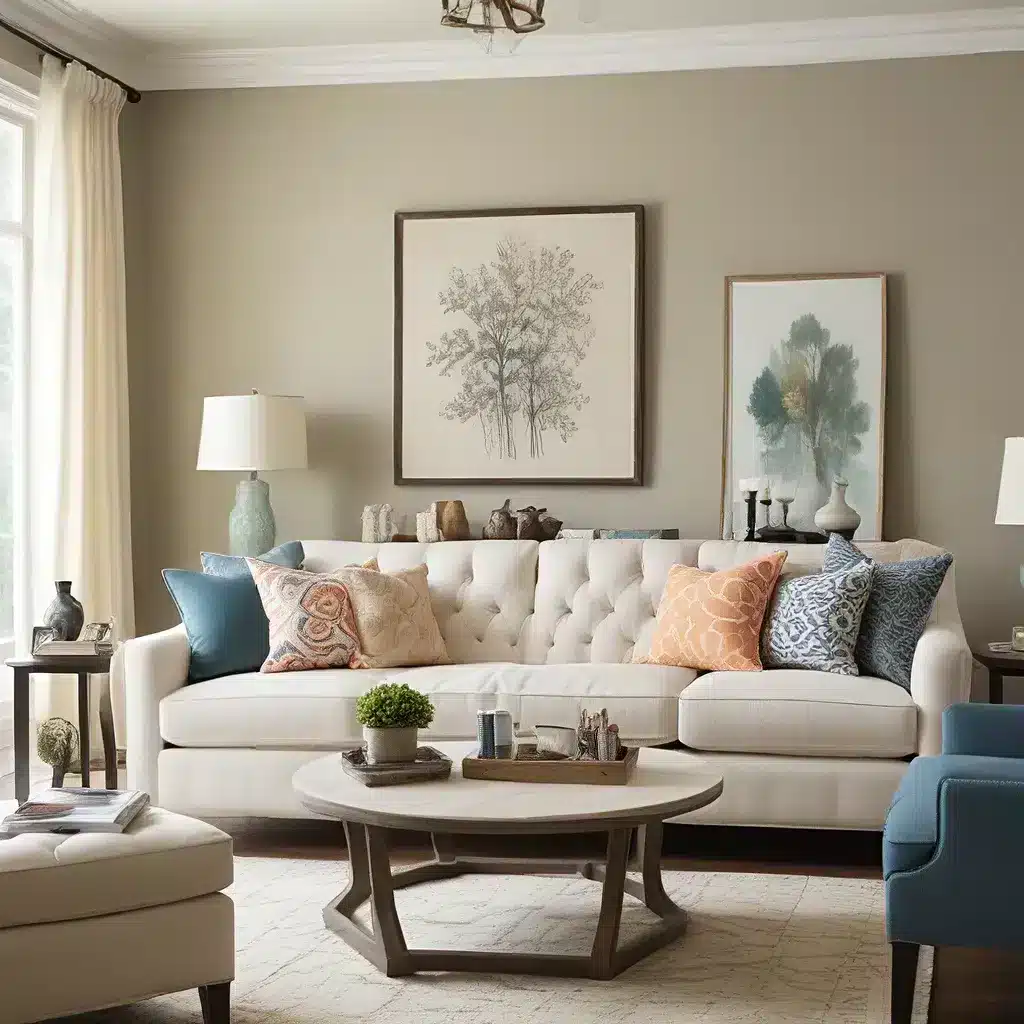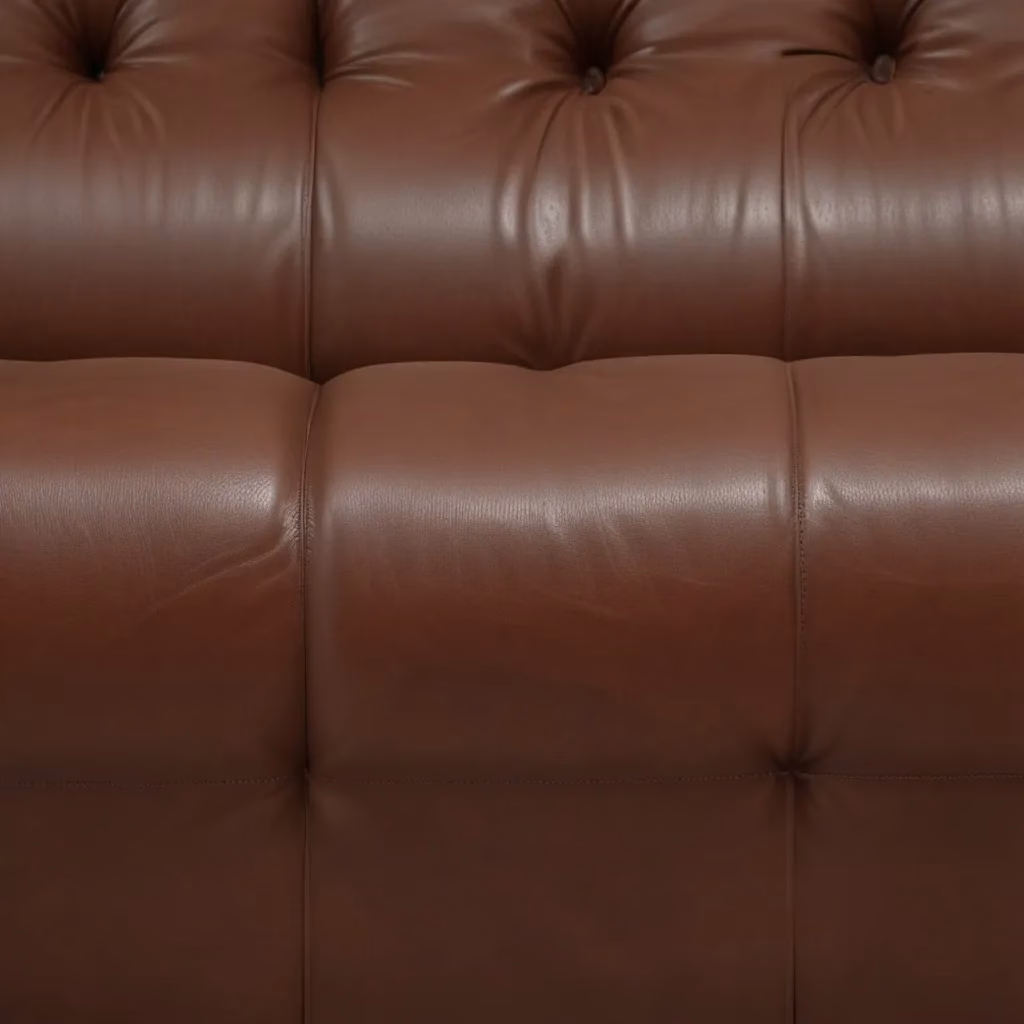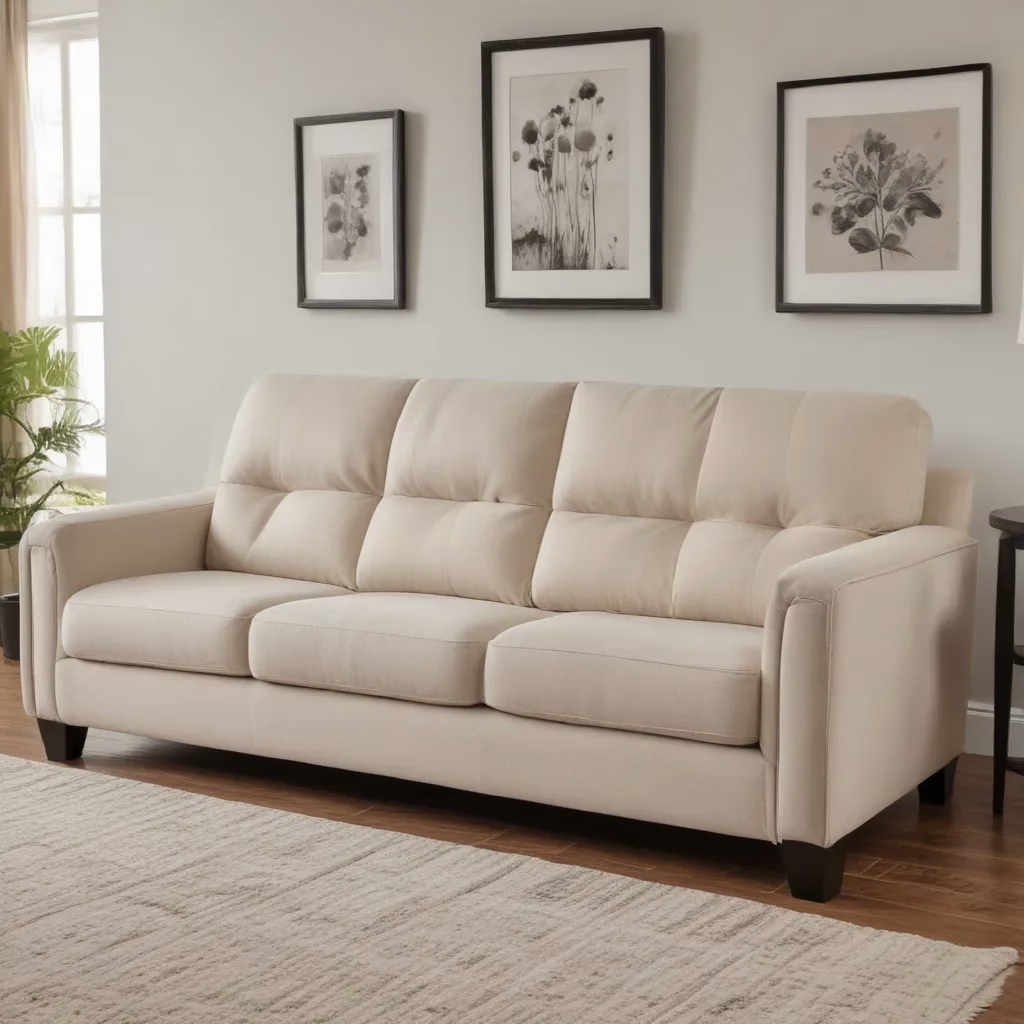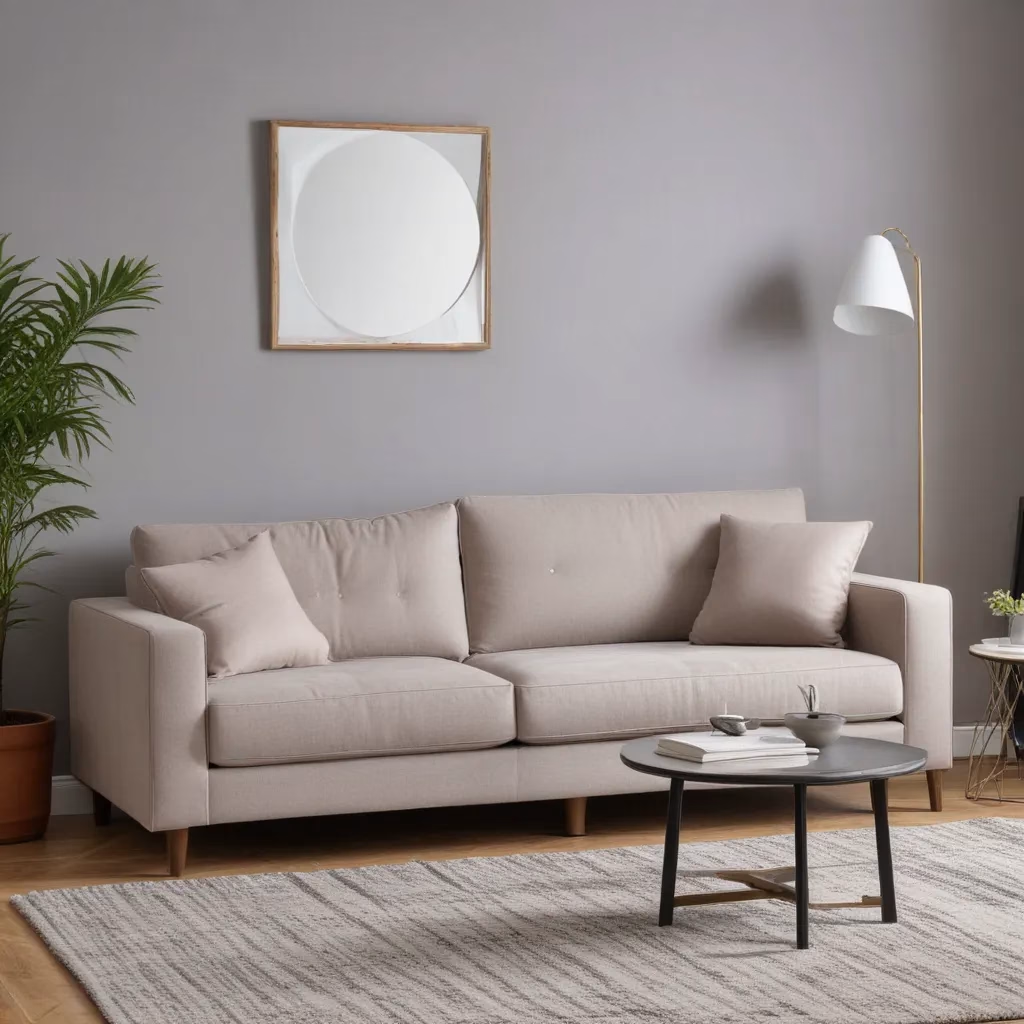
As someone who takes their home decor seriously, I’ve always been fascinated by the art of coordinating colors and patterns. It’s like putting together the perfect outfit – you want the pieces to complement each other in a way that looks effortless and stylish. And when it comes to outfitting my living room, that challenge becomes even more exciting.
You see, I’m the kind of person who can’t resist a bold, colorful sofa. There’s just something about a rich jewel-toned velvet or a playful printed fabric that speaks to my soul. But as any interior design aficionado knows, choosing the right accent pieces to pair with a statement sofa can make all the difference between a room that sings and one that falls flat.
That’s why I was thrilled when the team at Sofa Spectacular reached out and asked me to share my tips and tricks for coordinating sofa and accent colors. As someone who has spent countless hours perusing design blogs, scouring vintage shops, and experimenting with different combinations in my own home, I feel like I’ve developed a bit of an eye for this sort of thing.
So grab a cup of tea, get comfy, and let’s dive into the world of mixing and matching sofa and accent colors. Whether you’re starting from scratch with a blank canvas or looking to refresh an existing space, I’ve got all the intel you need to create a living room that’s nothing short of showstopping.
The Power of Accent Pieces
Let’s start with the basics: accent pieces. These are the items that can really make or break a room’s overall aesthetic. We’re talking about things like throw pillows, area rugs, side tables, lamps, and of course, accent chairs.
Now, I know what you might be thinking – “Aren’t accent pieces just tiny little details that don’t really matter that much?” Well, my friends, I’m here to tell you that couldn’t be further from the truth. In fact, I’d argue that accent pieces are the secret sauce that can transform a space from ho-hum to high-impact.
Think about it this way: your sofa is the anchor of the room, the foundation upon which everything else is built. It’s the biggest, boldest piece of furniture, and it sets the tone for the entire space. But without the right accents, even the most stunning sofa can feel a bit… lonely.
That’s where those smaller, more playful elements come in. By carefully selecting the right colors, patterns, and textures for your accent pieces, you can create a cohesive, visually compelling look that ties the whole room together. And the best part? You can change up those accent pieces relatively easily and affordably, allowing you to experiment and keep your space feeling fresh.
The Art of Coordinating Colors
Okay, now that we’ve established the importance of accent pieces, let’s dive into the nitty-gritty of color coordination. This is where a lot of people tend to get stuck, but I promise it’s not as complicated as it might seem.
The key is to start with your sofa as the foundation, and then build out from there. Think about the undertones and dominant hues in your sofa fabric – are there warm notes of rust or mustard? Or do the colors lean more towards the cooler end of the spectrum, with blues and greens?
Once you’ve identified those core colors, you can start to play around with complementary shades and accents. A good rule of thumb is to choose one or two main accent colors that echo the tones in your sofa, and then incorporate smaller pops of contrasting or coordinating hues throughout the space.
For example, let’s say you have a lush, forest green velvet sofa. You could pair that with accent chairs in a rich burgundy or a deep, inky navy blue. Then, bring in some throw pillows in a geometric pattern that features both the green and the accent color, along with a cozy area rug in a complementary neutral like beige or grey.
The key is to create a sense of balance and cohesion, where each element feels intentionally chosen to work together. It’s not about matchy-matchy perfection, but rather a harmonious interplay of colors and patterns that keeps the eye moving around the room.
And don’t be afraid to experiment! One of my favorite things to do is to start with a more neutral sofa – say, a classic camel or oatmeal linen – and then layer in bold, vibrant accent pieces. It’s a great way to dip your toe into the world of color without feeling too overwhelmed.
Mastering Scale and Proportion
Of course, color coordination is only one piece of the puzzle. The way you scale and proportion your accent pieces is equally important when it comes to creating a visually balanced space.
Think about it this way: if you have a massive, overstuffed sectional sofa, pairing it with a dainty little armchair just isn’t going to work. The proportions will feel off, and the room will end up feeling disjointed and awkward.
Instead, you’ll want to look for accent pieces that can hold their own against the scale of your sofa. A generously-sized accent chair in a bold, saturated hue might be just the thing to complement a large, sprawling sectional. Or, if you have a more modest-sized sofa, you could bring in a pair of sturdy, substantial armchairs to create a cozy conversation nook.
And don’t forget about the smaller accents, too. Those throw pillows, side tables, and lamps may be smaller in scale, but they still play a crucial role in tying the whole look together. Try mixing and matching different sizes and shapes to add visual interest, and don’t be afraid to layer things up for a more dynamic, layered feel.
As the design experts at Life on Cedar Lane point out, the key is to start with your largest pieces and work your way down, arranging the accents in a way that feels balanced and harmonious. It might take a bit of trial and error, but once you get the hang of it, I promise it’ll be second nature.
Bringing in Texture and Pattern
Now, let’s talk about the fun stuff: texture and pattern. These are the elements that can really take a room from basic to bold, infusing it with that “je ne sais quoi” that makes a space feel truly elevated and special.
When it comes to texture, the possibilities are endless. Think plush velvet, nubby boucle, sleek leather, or even airy linen. The key is to mix and match different surfaces to create depth and visual interest. Pair a smooth, glossy coffee table with a shaggy area rug. Or juxtapose a soft, tufted accent chair with a sleek, angular side table.
And pattern? Oh, pattern is where you can really let your creativity shine. Stripes, florals, abstract prints, oh my! The key is to select patterns that complement each other in terms of scale and color, so they work in harmony rather than feeling like a jumbled mess.
As the design team at Pretty Purple Door suggests, try to stick to a cohesive color palette when mixing patterns, and don’t be afraid to incorporate solid, neutral pieces to anchor the more dynamic elements. A bold, graphic rug paired with a classic striped throw pillow and a solid-colored accent chair can create a beautifully layered look.
The key is to have fun and not be afraid to experiment. After all, your living room should be a reflection of your personal style and taste. So don’t be afraid to get a little adventurous!
Putting It All Together
Okay, so we’ve covered color coordination, scale and proportion, and the power of texture and pattern. Now, let’s talk about how to pull it all together into a cohesive, show-stopping living room.
First and foremost, it’s important to start with a clear vision in mind. Identify the overall aesthetic you’re going for – is it modern and minimalist? Cozy and traditional? Eclectic and bohemian? – and let that guide your choices.
Once you’ve got that foundation, it’s time to start layering in your pieces. Begin with your sofa as the anchor, and then build outwards from there. Choose your accent chairs, side tables, and coffee table, making sure the scale and proportions feel just right.
As design expert Maria Killam advises, it’s crucial to incorporate a variety of sizes and scales when it comes to your accent pieces. You want a mix of large, medium, and small elements to create that perfect balance and visual interest.
Once you’ve got the bigger pieces in place, it’s time to have some fun with the smaller accents. Start layering in those throw pillows, rugs, lamps, and other decorative touches. Pay attention to the colors, patterns, and textures, making sure they all work together in harmony.
And don’t be afraid to play around and rearrange things until you get it just right. Sometimes it takes a bit of trial and error to find that perfect combination. But trust me, when you do, it’ll be nothing short of magic.
The Final Reveal
So there you have it, my friends – a comprehensive guide to coordinating sofa and accent colors in your living room. From bold, vibrant hues to timeless neutrals, the possibilities are endless. And with a little bit of creativity and a whole lot of personality, you can transform your space into a true showstopper.
As you embark on your own decorating journey, remember to have fun and let your unique style shine through. Whether you’re drawn to sleek, modern pieces or cozy, traditional touches, the key is to create a living room that feels authentically you.
And of course, if you ever need a little extra inspiration or guidance, the team at Sofa Spectacular is always here to lend a hand. Happy decorating!



